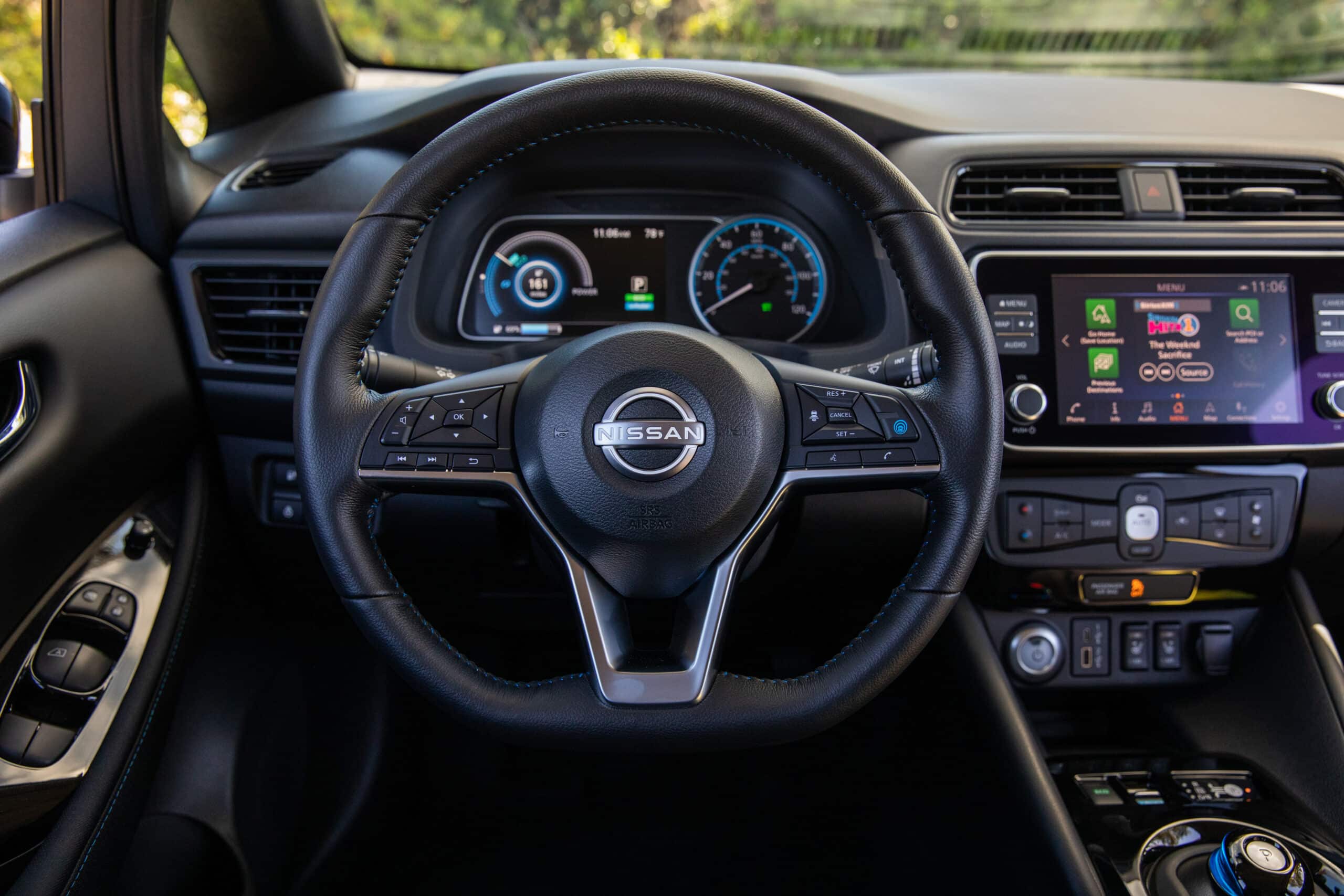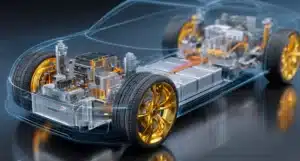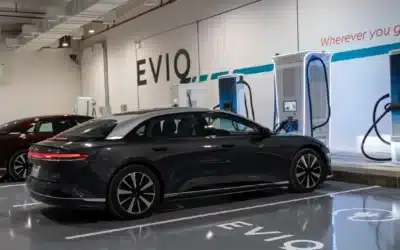Some drivers miss it, others revel in its absence. What are we on about? Engine noise, or rather the lack of it, in electric cars.
And it’s not just the noise, it’s the vibrations that accompany the presence of an internal combustion engine. Imagine a device that is containing over a 100 explosions per second, with pistons furiously spinning a crankshaft at thousands of revolutions per minute.
The EV is a modern marvel, because it aspires to silent motoring thanks to far fewer moving parts, being fuelled only by discreet electrons and most crucially, lacking the rumble and drumbeat of a machine trying desperately not to blow itself to bits.
Of course, it’s not entirely silent, there’s road roar and wind noise. Plus, any deficiency in production quality will result immediately in tell-tale squeaks and rattles. The absence of engine noise not only amplifies other ambient sounds but also alters auditory expectations within the vehicle.
Thus, we arrive at the crux of the issue; as electric vehicles redefine automotive silence, the realm of in-car audio and entertainment faces novel challenges and opportunities. This new soundscape requires a meticulous recalibration and demands innovation from car companies and audio engineers alike.
Engineers explain the sound of silence
We’ve been talking to experts at Nissan and Korean luxury car-maker Genesis, to get some insight on the implications for in-vehicle entertainment systems.
“The shift towards electric vehicles, while eliminating engine noise, brings forward tonal, higher-frequency sounds from electric components, previously masked by combustion engines,” explains a Genesis spokesperson.
Paul Speed-Andrews, Nissan Technical Centre Europe’s Vehicle Performance Planning Manager, elaborates: “As the cabin noise is reduced, smaller noises previously overshadowed by the engine become prominent. We’re now managing the sounds that electric motors and inverters make, alongside the usual road noise considerations.”
In an EV, the entertainment system no longer finds itself competing with the rhythmic hum of an engine, but instead it now has to contend with variable noises like tyre friction or high-frequency electric whines.
Wired for sound
Thomas Allen, a Design Engineer for Audio Systems at Nissan Technical Centre Europe, recognises the potential in this quietude: “Yes, quieter cars, in general, do help with improving the audio experience.” But the fundamentals are similar, he insists. “To achieve the best audio performance, we apply the same techniques to both EV and ICE vehicles.”
Even the equipment is the same he reveals: “In the past we designed specific speakers to be as light as possible for EVs to save weight. But today we are able to achieve the same performance for the same weight, so we use the same parts now on ICE vehicles.”
Nonetheless audio systems in EVs must be refined to handle a broader range of frequencies clearly and accurately. Moreover, the sound system itself needs to complement the ambiance within an EV, requiring sound engineers to reconsider speaker placement, system tuning, and even the acoustic materials used in the vehicle.

The Nissan Leaf has a widely acclaimed sound system from BOSE.
Silencing the rogue sound waves
Reducing Noise, Vibration and Harshness (NVH) has been a mantra of the motor industry for some decades now. Heavily employing sound deadening materials has been an effective solution of the past. However, this adds weight, and that’s the last thing an EV needs when striving for outright mileage range.
Car companies have turned to active noise suppression technologies such as transmitting noise-cancelling counter-waves to eliminate noise. However, “Active Suppression is most effective at low frequencies or tonal components, ideal for specific NVH source issues,” explains our friend at Genesis.
It only goes so far, so Nissan’s tactics include challenging tire manufacturers to reduce noise radiation and improving body stiffness and structural isolation. These strategies aren’t just about reducing overall noise levels; they’re about creating a consistent auditory canvas on which the vehicle’s audio system can paint its soundscape.
Faking the aural experience
Would the reintroduction of simulated engine noise help? Here there’s a difference of opinion. Genesis says: “when the vehicle has no acoustic feedback from the motor speed, it also leads to a lack of performance related feelings which the customers are used to with the noise and vibration feedback of ICEs. This all leads to the increasing importance of Sound Quality and customers’ subjective preferences.”
However, according to Speed-Andrews: “Our customers enjoy the quietness of EVs, they list a quiet cabin as one of the reasons for purchasing an EV, so a lack of engine noise is one of the key positive features of an electric vehicle.”
He cautions against simulations that replicate ICE sounds within EVs. Instead, he advocates for creating audio experiences true to the characters of electric vehicles. This might involve embracing the vehicle’s unique electric whirrs or utilising electronic sounds that enhance the futuristic feel of EVs.
The Genesis engineer concurs that a new generation of motorists have different expectations when it comes to in-car sound. Connectivity is crucial and they don’t want disturbances: “The use of vehicles is changing, and the purpose of a car is evolving. Mainstream users’ demands have shifted towards communication and connectivity, meaning other noise influences from the vehicle are distractions.”
Individual sound zones
As such passengers riding in cars now expect to be able to personalise their acoustic environments, even going as far as individual sound zones for each occupant. Such are the features being developed to significantly enhance in-car entertainment. It means not just having a high-quality sound system, but one that is flexible and configurable, responding to various in-cabin needs, from taking calls to listening to music or podcasts, without intrusive interference from vehicle sounds.
Enhanced orchestral manoeuvres
It’s an odd conundrum. The supposedly ‘silent’ operation of EVs, should instantly endear them to audiophiles. But it’s not so simple, because removing the combustion engine, simply brings to the fore all the annoying noises we never heard before; from the thud of the tarmac, the woosh of the wind to the minutiae of previously imperceptible clatters and squeals.
Striving to subdue errant noises, car manufacturers are doubling down on sound-dampening and suppression technology and methodology, and the journey toward harmonising silence in electric vehicles will ultimately deliver the most vibrant, rich and immersive audio ever experienced in an automobile.











